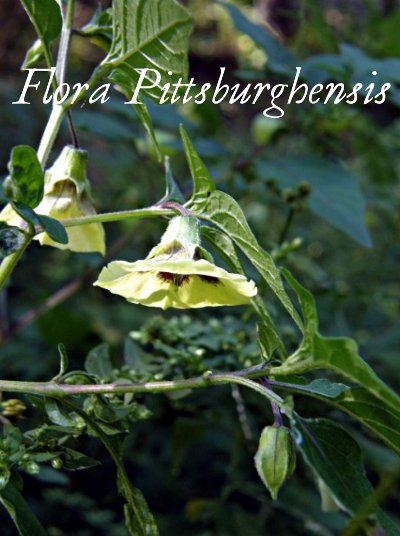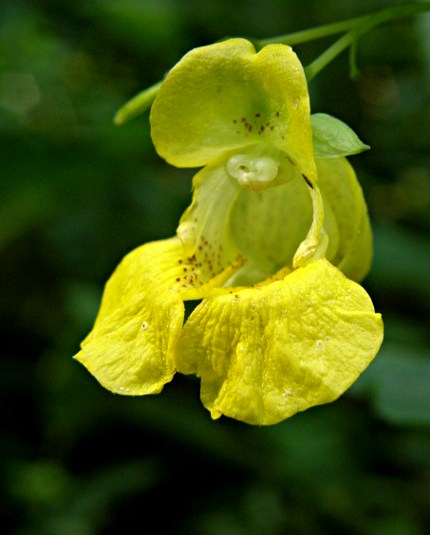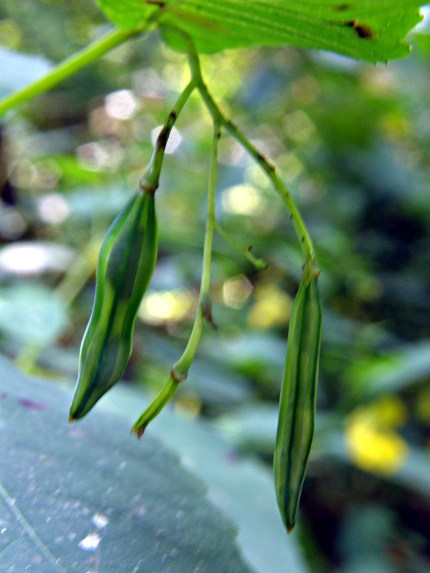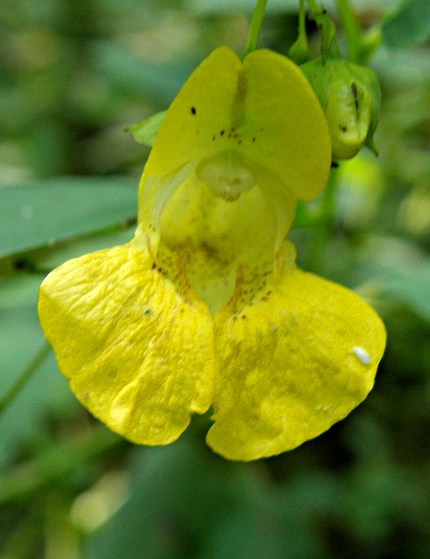This is the face of a Middle Eastern trader as imagined a century ago by sculptors who had doubtless read the Arabian Nights in the popular Victorian translation. It adorns what Pittsburghers know as the Gimbel’s building, because it held the Gimbel’s department store for more than fifty years.
-
A Prosperous Oriental Merchant
-
Announcement

The new Flora Pittsburghensis is a celebration of the wild flowers of Pittsburgh and suburbs. Wild flowers will still appear once in a while on Father Pitt’s site, but Flora Pittsburghensis is devoted exclusively to botanical matters, leaving Father Pitt to concentrate more on the architecture and history of Pittsburgh.
-
Pittsburgh, Leader of All
Just in time for the Pittsburgh Summit, a rousing march by Alma Y. Johnson to use as our anthem. It was originally published in 1926 by Ms. Johnson herself. Click on the pictures for full-size JPEG pages that you can print and carry to your piano or parlor organ. The cover alone is worth your time: it bears a sketch of the Pittsburgh skyline as it appeared in 1926, and its black-and-gold colors show us that some things never change.





These are the lyrics, reprinted as they are punctuated in the original:
1. The Spirit of Progress took wing
O’er America’s land coast to coast,
From the East where of Pilgrims they sing
To the West, where of wonders they boast
From the North, where the lake waters gleam
To the South, where the Rio Grande flows,
And came to the place of her dreams,
Where the fire of genius glows.CHORUS
Oh! Pittsburgh, City born of skill,
The child of river and of hill,
Heir to blessings from on high
The promise of time gone by.
Comrade gay to all who thrive
The hope of those who bravely strive,
Father of Industry, Patron of the Arts,
Pittsburgh! Leader of all.2. The deeds of thy children are known
Where courage and faith have joined hand,
Thy standard of learning has flown
On the breeze, over ocean and land
Thy steel, bright and true, spans the world
’Cross river and mountain and glen
Thy banner of Progress unfurled
Leads on the souls of men.CHORUS
Note: This music is in the public domain, so anyone can reproduce or perform it in public at any time and for any reason.
-
A Very Pittsburghish Flower

They’re black and gold, and they bloom all summer. Black-eyed Susans (Rudbeckia hirta) are popular garden plants here, but they also pop up along roadsides and in vacant lots. Father Pitt is of the opinion that this flower, with its persistence, its indomitable good cheer, and above all its showy black-and-gold coloring, ought to be adopted as a symbol of Pittsburgh.

-
The Thoroughwort Tribe
Flowers of the genus Eupatorium brighten late-summer roadsides and almost define the season in Pittsburgh. They are members of the Composite family (Compositae or Asteraceae), which means that, as with daisies or dandelions, each apparent flower is really a cluster of tiny flowers. Collectively members of the genus are all known as “thoroughworts.” Here are three of the most common species.


Click on the picture to enlarge it. Snakeroot (Eupatorium rugosum) lives at the edge of the woods in large colonies, giving whole forests a broad white margin. A close look reveals the individual flowers that make up each head.

Joe-Pye-weed (Eupatorium fistulosum) is one of our most spectacular late-summer flowers. It can easily grow to eight feet high, and its faded mauve color is unique. The name, legend has it, refers to an Indian known as Joe Pye who used the plant to cure various ailments.

Thoroughwort or boneset (Eupatorium perfoliatum) lives in wet areas, as here at the edge of a marshy pond. Note how the opposite leaves completely surround the stem.
-
Ground Cherry
Ground cherries grow almost wherever there is ground. We have two species in the area; both produce edible fruit inside their little Japanese lanterns, although it’s not usually much good until a week or two after it falls off the plant. (The papery lantern is toxic, so don’t eat it.) These pictures are of Physalis pubescens.
The flowers face downward and so are easily missed, but they’re worth examining closer. The color is primrose yellow with mahogany splotches around the center. They look like little Tiffany lanpshades, almost always held wide open and parallel to the ground.

-
Touch-Me-Not

Touch-me-nots, or jewelweeds, are some of our most common roadside flowers, and few flowers are more delightful. Close relatives of the garden Impatiens plants that seemed to have taken over the nurseries a few years back, they grow in vast colonies along the edge of the woods.

There are two common species in the eastern United States. Impatins pallida, which grows in the north and at higher elevations, has yellow flowers; Impatiens capensis (or Impatiens fulva), which grows in the south and at lower elevations, has bright orange flowers. Pittsburgh is right on the border of their ranges, so we get both, sometimes thoroughly mixed in the same colony. These pictures are all of Impatiens pallida.

The name “touch-me-not” comes from the explosive properties of the seedpods. If you touch a ripe seedpod, it will suddenly explode and send seeds flying in all directions. (The explosion is harmless, of course, but very amusing to children.) The secret is in the tense fibers of the pod, which, when the thin membrane that holds them together is ruptured, curl instantly into little coiled springs. You can tell a pod is ripe when you can see the black seeds through the thin green membrane.

Click on the picture to enlarge it. The flowers are perfectly adapted for pollination by bumblebees. Each flower is almost exactly the size of a bumblebee; what the bee wants is far back in the spur of the flower, so that the bee must enter the flower completely and then withdraw, laden with pollento fertilize the next flower.

-
The Old Custom House

The old custom house in Pittsburgh as it appeared in 1857, courtesy of Wikimedia Commons. In the middle nineteenth centuy, Pittsburgh was making its transition from a rather grubby industrial town to a magnificently grubby metropolis; note the difference in scale between the custom house and its neighbors.
-
Fort Duquesne Bridge
The companion to the Fort Pitt Bridge, the Fort Duquesne Bridge crosses the Allegheny, giving the Point a pair of golden wings. The picture was taken with a Kodak Retinette.
-
Heinz Field from the Point




